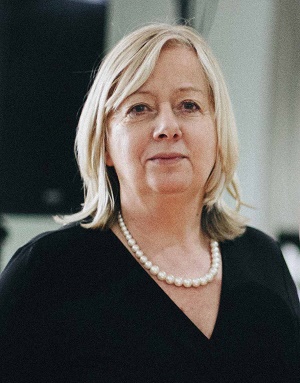Fighting The Stigma of Care Homes, From The Inside
There’s no question that everyone, no matter their income, should be afforded top-tier care. In our ageing society, more and more people will need the assistance of these homes as they grow older.
It’s perhaps no wonder then that care homes have received significant attention in recent years from the press. Like all UK healthcare institutions, our perception of care homes is, at least to some degree, shaped by the media.
Yet the scrutiny care homes have received in the press means that many no longer evaluate care homes on an individual basis, but instead see them as one institution – as one murky monolith.
But how much of the stigma is based on reality?
In the second episode of the Caring Together podcast, Carolyn Baker-Mellor, Trading Director at Towergate Insurance Brokers, and Dan Bridges, Senior Commissioning Manager for Avery Healthcare, got together to discuss this big question.
Care homes: the untold story
Dan Bridges is no stranger to the impact that inadequate care can have on an individual’s life. Though he’s now the Senior Commissioning Manager for Avery Healthcare – as well as Director for a charity called Hourglass – he first started off as a showjumper. After a riding accident, Dan received such a poor level of care for his injury that he knew he’d have to change career.
Dan’s journey in the care sector began as a night care assistant, where he worked his way up to where he is now. He’s all too familiar with the way public perceptions of care can shape the sector itself. “We need to highlight [issues in care] because we need to be open and transparent about what goes on. However, there’s absolutely not enough done about...what we do good for our residents, how we impact our residents’ lives.”
‘Person-centred care’ is a term that’s increasingly associated with stellar-quality care homes. This approach to care puts the needs of residents at the heart of a home’s philosophy, and has been adopted at Avery Healthcare. Dan talks about how person-centred care reaps real benefits on the lives of residents, including one individual who had had to give up her love of swimming after receiving a dementia diagnosis. “[The resident] is extremely independent, but she is living with a dementia diagnosis. Looking at risk management....family and people thought it was too much of a risk to take a swim. We’ve looked at what we can do to rehabilitate her...so she goes swimming weekly with us. She lives with dementia, but she lives well with dementia.”
“She lives with dementia, but she lives well with dementia.”
Stories of how care practitioners make a real positive splash on residents’ lives are often missing from public narratives about care homes. “We don’t report on things like that,” says Bridges. “About how we enable people in their lives to continue living. Care homes are not a closure on somebody’s life.”
Changing the optics of care
There are many levels when it comes to changing people’s perceptions of care homes. One of those levels is recruitment, and tackling the idea that roles in care are for those who otherwise lack career direction. Carolyn shares, “I remember my daughter coming home from school talking about her GCSEs. [She said that] some of the kids who don’t know what to do are going into health and social care.”
The origin of how roles in care came to be seen as a plan B is unclear. What is clear, however, is that, just like any other sector, care homes need exceptional talent in order to truly thrive. Changing public perception so that roles in homes are seen as more desirable begins on a community level. Dan Bridges discusses, “I have relationships with local schools myself and my team before have actually gone to assemblies and spoken about careers in care...and about how it can enable a profession for us. You can really grow in this sector if you’ve got the power, the drive, the energy, and you really want to make a difference to people’s lives.”
Dan goes on to speak about the community fund project Avery Healthcare have set up to increase visibility of the home in the community. “We’re doing a community fund project where we’re enabling people to apply for grants to us so we can support them to go on and do something in our local community.” While successful candidates get to have their chosen career supported, Avery Healthcare gets to nurture the optics of its home and maybe make an impression on someone who might consider a career there. “It’s about the whole experience,” Dan says.
“It’s about what we do to people’s lives....to get away with the stigma of care homes.”
It’s not just care home residents that benefit from the right people being attracted to the sector. There are positive ramifications insurance-wise, too. Carolyn shares that one of the highest volumes of claims she sees are disputes from employees unhappy with how they were treated. Carolyn explains, “If the people who are working for you are happy and are feeling fulfilled...that means that from an insurance point of view, it’s a better risk because you know that you’re doing absolutely everything.”
Chipping away at the stigma that surrounds care homes to encourage top talent into the sector can be a creative process. “Every day we had something going on [for open week], whether that was an arts and crafts therapy session, a sound healing session...we had music, piano players. We did a blue light breakfast for the local police, ambulance and fire service so that they got involved with us. It’s about what we do to people’s lives...to get away with the stigma of care homes.”
Got a query about care?
If you have any questions about this article, or want to know how we can assist you, contact Towergate by email today or 0330 123 5154.
This article is for general awareness on the given topics and any decisions about policy coverage should only be made through discussion with the appropriate contacts following the normal processes.
About the author
 Carolyn Baker-Mellor is a respected industry leader with over 35 years' experience within the care insurance sector.
Carolyn Baker-Mellor is a respected industry leader with over 35 years' experience within the care insurance sector.
Carolyn currently works at Towergate as Head of Care Insurance.
Date: September 27, 2024
Category: Care and Medical












